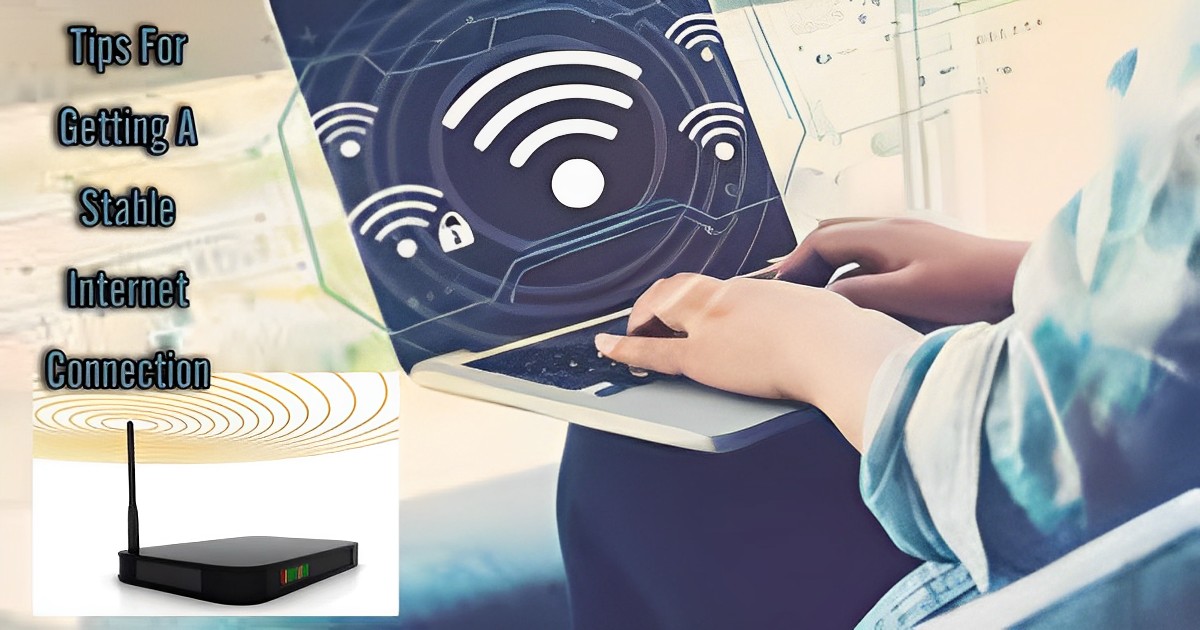Having an unstable internet connection is one of the biggest problems of this day and age. Since so much of our work, security, and entertainment depends on the internet, losing connection even for a little time can result in loss. With the shift in work practices and a higher number of people choosing remote working opportunities, the Internet has become an indispensable part of our lives.
Whether you own an online business, have to communicate with your office online, are taking online classes, or are just in the mood for a good online gaming session, making sure that your internet is running to its true potential is a must.
So if you’re also facing issues with your internet often, here’s your quick and Easy guide to help improve the speed and stability of your internet connection.
Table of Contents
Here are 6 tips For Getting A Stable Internet Connection:
1. Place your Internet at the center of your home
The position of your modem or router can be a deciding factor in how well your internet will perform. If you’re someone who is concerned about the aesthetics of your home, there’s a high chance you’ve hidden your modem or router in a deep dark corner where it is trying its best to catch some signals.
Having your modem placed in a corner, or somewhere too low may be a reason by you are not getting a good signal strength. You should consider placing it on a shelf or somewhere it can access signals better. If you have a double-storied home, you would want to get a uniform signal on both floors. Think about all these factors and if you’re worried to disrupt your aesthetics, get a cute shelf installed, add a plant and a few books, and you’re good to go!
2. Upgrade your Router for better signals
If placement isn’t an issue, there may be some problem with your router. If your internet service provider has rented out a router to you as part of your internet plan, you might want to get in touch with them to discuss an upgrade. If they’re not offering an upgrade at the moment, they may send in an inspection team to help figure out any issues with your router.
Some internet service providers like AT&T internet offer new and upgraded internet devices and offer support to customers when faced with an issue. You get on a call with your provider’s support team to help identify and solve the issue.
3. Install an anti-virus
Anti-viruses are one of the biggest causes of slow internet connection. Viruses stick to your internet and pick up data from your system, using a lot of your internet’s bandwidth, causing your connection to slow down. There are a number of viruses that can possibly attack your system and damage not only your security but also your internet’s health. To guard your computer and internet against any such cyber threats, it is best to have solid anti-virus software installed in your system. Furthermore, you also need to keep your anti-virus updated to ensure maximum security.
4. Shut down all background apps
Your internet bandwidth is constantly being consumed when there are apps running in the background. Whether you’re streaming or playing a game, it is best to close any unwanted background apps to get a stable internet connection.
Some apps take up a lot of bandwidth for syncing, uploading, downloading, or constantly buffering data. To manage your internet connection, control where your bandwidth goes, and monitor your usage with bandwidth monitoring tools, keep only the apps you’re working on active so your speed stays fast
5. Check if your internet plan is sufficient for you
Your Internet requirements and Internet plan need to be in line with each other. If your internet requirements have increased, you should also look to upgrade your internet plan. You might be using up all of your internet plan’s data in tasks like video calling, streaming, or online gaming.
You probably need a plan with more data cap so your internet speed is not compromised once you have used up your data limit. So if your internet is acting up, check for your plan, tally it with your requirements, and then talk to your internet service provider to upgrade your plan according to your needs.
6. Get in touch with your Internet service provider
If you have tried all your options and still are unable to get that smooth and stable internet speed, you need to now get in touch with your internet service provider. Your service provider’s support team will help you figure out what the problem is with your internet.
If you need to change your router’s adjustment, upgrade your router, upgrade your plan, or something else, they will guide you in the best way.
Ending Note:
Having a slow internet connection is something we all dread. However, with the right steps, you can make sure to prevent loss of connection and maintain a stable internet. We hope our tips have been of help and you are able to figure out the main cause of your slow internet. If you have any more suggestions as to how the internet connection can be stabilized, let us know in the comments below.
Visit for more articles





